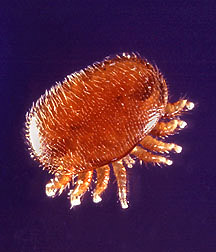Inside a beehive, there are different types of comb. The brood comb is where the queen lays her eggs. The upper corners of the brood comb will usually have pollen, nectar, or honey. The rest of the cells are used to house bees as they develop from an egg. During the summer, the queen can lay up to 2,000 eggs in one day. The bees go through different stages of development. The term brood refers to the egg stage. The next stage is larvae, a time during which the young bees are fed by other bees. The final stage is the pupae. The bees grow larger at this point and reorient vertically in the cells, spinning a sort of cocoon. The other bees will create cap on the cell. When the bee is fully grown, it emerges from the cell!
Drones are the male bees, produced from unfertilized eggs laid by the queen. Their brood are larger in size.
In this picture, the paler flatter area on the left is capped honey. The large protruding cells are the drone brood. [picture from
flickr]
 another picture
another picture
The nice brown flat cells are the capped brood that are in the pupae stage.
And lastly, another picture of the larvae stage. After the tiny egg stage, the bees look shiny and white and worm-like!







